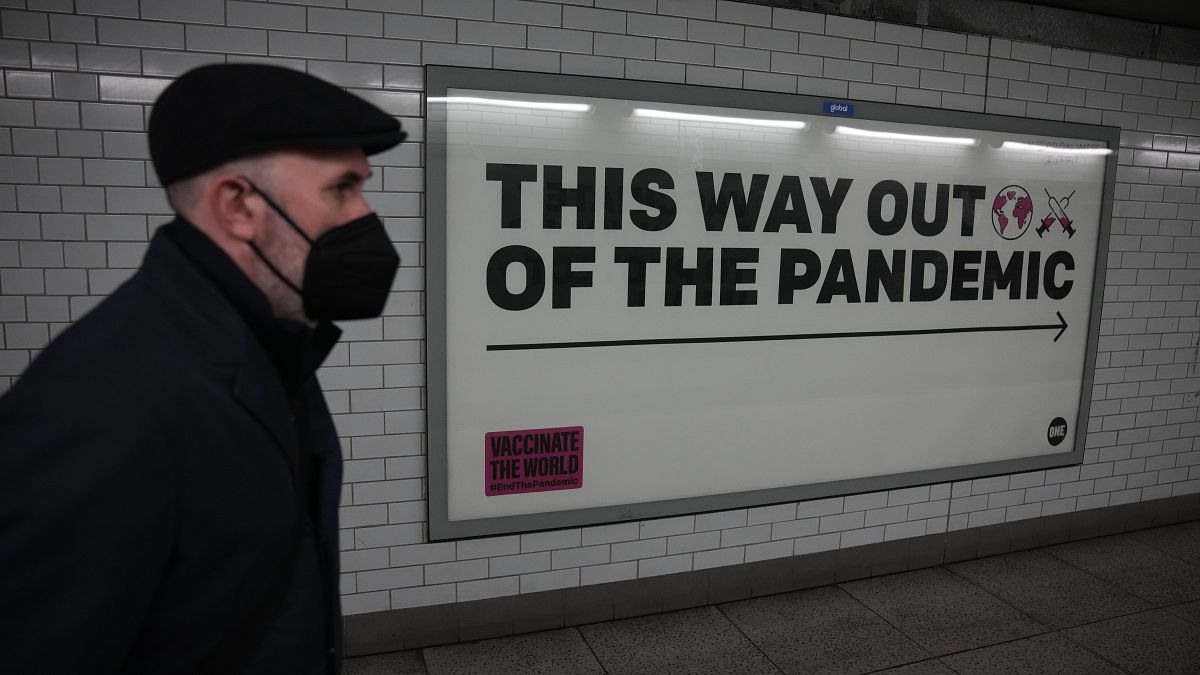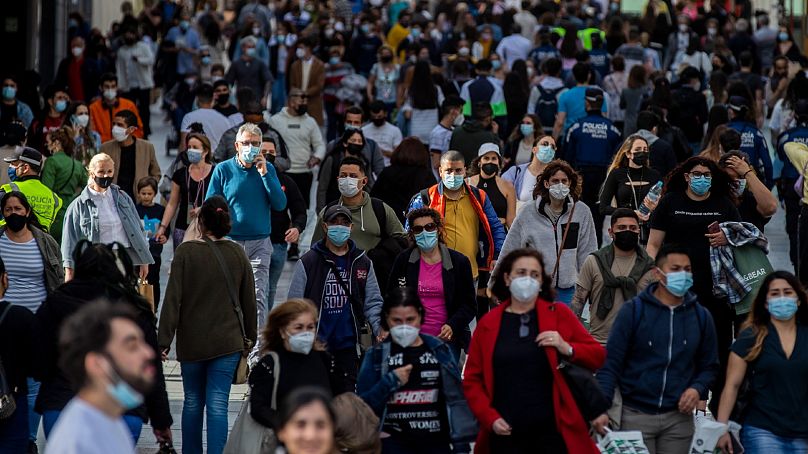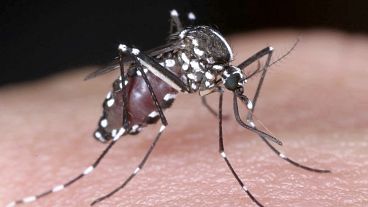Millions of people across Europe could be suffering from long COVID. Experts want more resources to be put into investigating the condition and how to treat it.
Countries across Europe are underestimating the potential impact of long COVID, and more must be done to understand and treat the condition, experts have warned.
The impact of long COVID is not clear yet, with disparate documentation of the condition in different countries, but one thing is clear - millions of people across the continent are likely to be suffering from it.
A recent study of more than half a million adults in England found one in 20 had persistent COVID-19 symptoms. The findings could mean that well over two million people in England alone could have long COVID.
Given the potential scale of the issue with those numbers multiplied across the continent, health experts and activists are calling for more research and resources to go into understanding and treating long COVID.
“A lot of people can’t go back to work, or can’t work full time, because they are still so sick, which will have a big influence on the economy of a country,” Ann Li, the chair of the patient association network Long COVID Europe, told Euronews Next.
Li herself contracted COVID-19 in the first wave back in March 2020, and is still suffering the effects more than two years later.
“A lot of countries still underestimate the impact of long COVID, not only on the personal lives of the people involved, but also on the workforce,” she said.
“We need more financial efforts to support people who are sick, to make sure they don’t fall into poverty because of their sickness”.
Europe hit a grim milestone in the pandemic on Thursday, with reported deaths from COVID-19 passing the 2 million mark. The World Health Organization (WHO) called the number "devastating" and stressed it only represented "a fraction of the overall deaths directly and indirectly associated with COVID-19".
What is long COVID and what are the symptoms?
The WHO defines long COVID as a variety of mid to long-term effects following recovery from initial COVID-19 illness, that occur usually within three months from the onset of COVID-19. The symptoms and effects last for at least two months and "cannot be explained by an alternative diagnosis”.
It lists the main symptoms as:
- Fatigue
- Shortness of breath or difficulty breathing
- Memory, concentration or sleep problems
- Persistent cough
- Chest pain
- Trouble speaking
- Muscle aches
- Loss of smell or taste
- Depression or anxiety
- Fever
Long COVID can severely impact people's day-to-day lives, making what used to be routine tasks too tiring to complete.
“People can’t be the partner they want to be, can’t be the parent they want to be, or just can’t go out and see friends anymore," said Li.
How common is long COVID?
According to the WHO, current evidence suggests around 10 to 20 per cent of people experience a variety of symptoms after they recover from their initial illness.
There are an increasing number of studies being published and conducted to understand not only what long COVID is, but also how many people have it.
A recent study led by Imperial College in London suggested more than two million people in England alone could have it.
The Imperial College researchers say people at most risk of persistent symptoms following coronavirus infection are women, people who smoke or are obese, people who live in deprived areas, and those who have been admitted to hospital with COVID-19.
Another study, published on Wednesday (May 11) in The Lancet medical journal, found that two years after infection, half of people hospitalised with COVID-19 still have at least one symptom.
And yet another, conducted in Luxembourg, found six in 10 people with COVID-19 still have at least one symptom a year later.
The researchers at the Luxembourg Institute of Health also found that COVID-19 symptoms that don’t clear up after 15 weeks are likely to last at least a year.
Professor Paul Elliot, from Imperial College London’s School of Public Health, said his university’s findings “paint a concerning picture of the longer-term health consequences of COVID-19, which need to be accounted for in policy and planning.”.
“Long COVID is still poorly understood but we hope through our research that we can contribute to better identification and management of this condition, which our data and others’ suggest may ultimately affect millions of people in the UK alone,” he said in a statement.
‘The message isn’t being heard’
The WHO has called long COVID a “pandemic within the pandemic”, something Li says is an important step.
“We have a feeling that message isn’t being heard by countries. We’re hoping now that the acute part of the pandemic is over, people will have more time and resources to put into long COVID,” she said.
Li said her organisation has been in contact with “a steady influx of people” since the end of 2021, and as cases of long COVID aren’t properly registered by different countries, “governments don’t realise how big of an issue it is”.
She is now only able to work half the hours she did before getting sick, and she argues governments need to properly record cases of long COVID, whether or not an initial COVID-19 test was confirmed.
“For a lot of people who got sick in the first wave, there was no testing at the time. It’s not fair if those people hear afterwards that they can’t say for sure we have long COVID. That’s why we’re happy that WHO has included that in their definition of long COVID,” she said.
“If you’ve had COVID and you've had the most common symptoms of long COVID then there should be no doubt”.
What to do if you’re struggling with long COVID
Li says it’s important people who think they are suffering from long COVID know “it won’t be over just by trying harder” - in fact, “trying harder” can actually make things worse.
She directs people to resources at the website longcovid.physio, which has bite-sized information on what long COVID is and how to try to recover from it.
And there are numerous studies ongoing into how to treat different long COVID symptoms.
A recent pilot rehabilitation programme in Ireland has presented positive findings, using occupational therapy techniques.
The project in St James’s Hospital involved 53 patients, with a median age of 51, who had self-reported fatigue that was affecting their ability to take part in everyday activities.
They participated in group-based interventions delivered online by an occupational therapist over a four-week period, focused on self-management techniques to address everyday fatigue and brain fog.
The aim was to equip the participants with techniques they could practise in their day-to-day lives as much as possible, and preliminary analysis of the results showed significant improvements.
“We became concerned after seeing increasing numbers of patients who were having difficulty carrying out everyday activities because of fatigue. Fatigue was also affecting their return to work,” said Louise Norris, a senior occupational therapist at St James’s Hospital who led the study.
“There is an urgent need to find new and better ways of managing post-Covid fatigue and its wide-ranging, and in some cases, devastating, effects on people’s lives”.





